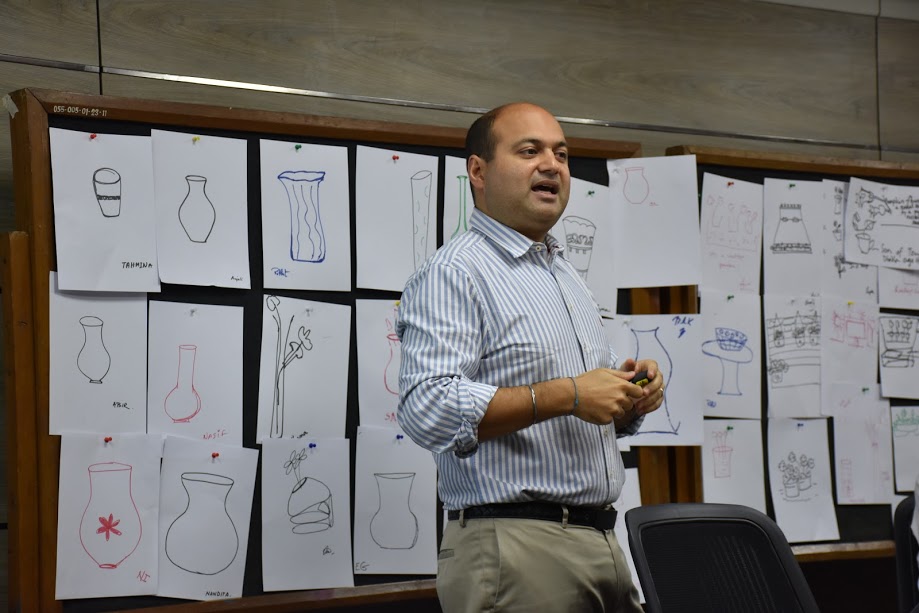Innovation is not invention. Innovation is not just a creative mess. Innovation is not following the latest fad. There are so many perceptions on innovation that it’s always good to start with what is not innovation. People who have been toying with the concept will have a range of definitions for themselves as well — some more articulate than others — while creating something of a mess with the concept more often than not.
Last week we had a group from Deloitte (originally from Doblin – Deloitte’s innovation wing) come and present their concepts of innovation to a few colleagues at BRAC. Their idea of innovation is deceptively simple, yet elegant: ‘innovation is the creation of a new, viable business offering’. The word viable and new is the key in here for Doblin — a firm which helps businesses set their innovation narrative on a canvas which feels their own. The team from Deloitte is currently with BRAC to help us rethink our health service delivery approach to make it more sustainable. They are bringing a fresh new perspective from different industries and applying their years of experience in, as one of their experts puts it, ‘breaking the barriers of orthodoxies’ within the system — something which can lay waste to the most efficient of models.
Seizing the opportunity, my team hosted a special innovation forum this month, specifically geared towards understanding their approach to innovation. A number of interesting topics came out in the two hours we had the session for; starting from their now-famous ten types of innovation to the more esoteric practices of sparking creativity by drawing really ugly vases (more on that later — or maybe not!). What was most valuable for me as a participant was to understand their principles of innovation and how it was broken down into six steps that anyone can follow:
- Thinking holistically
The word holistic is so overused in the development sector that it has quite the opposite effect on the readers these days. But the idea in here is going beyond a product or service to integrate multiple types of innovation. Innovation could happen in different verticals of network, customer experience, processes, service channels, brands among others. The key is to not stopping with just your product while innovating – there are other layers as well. Think of Nespresso’s coffee capsules and how they innovated around a highly commoditised product like coffee.
- Focus on fewer, bolder ideas
This is all about fostering the courage to set a high ambition level and prioritising quality over quantity. Rather than trying to do a lot of different things that seem trendy and cool in the moment, it’s always more effective to aim higher and target a small number of sectors or products to target. The payoff is without fail a lot bigger than going all over the place. Think of Tesla and SpaceX if you need inspiration for moonshot ideas!
- Be genuinely curious about customers
Understanding the context of customers’ lives, beliefs, attitudes and values is not just a luxury but a necessity for innovation. Whatever you do to innovate will have a very clear bearing with your customers, regardless of the industry.
- Look beyond your industry for ideas
There’s nothing wrong in borrowing from your own industry but truly transforming ideas can come from looking at how other are solving similar problems in their own industries with a completely different product or service. Just think of what Watsi did combining the idea of crowdsourcing and healthcare together.
- Challenge conventional wisdom
Easier said than done — orthodoxies are deep rooted and for fair reasons. Why change if staying the same is so comfortable? It’s not possible to challenge the status quo and break the system at one go. But making some of them explicit so they can be selectively overturned is always a good way to go about it.
- Build to learn
Probably the principle most people will agree to but will fail to take note. Committing to a proper prototyping cycle and piloting your offering till you get it right takes rigour, discipline for implementation and a mindset to experiment. Many organisations are coming to realise that the build-measure-learn loop is not just a theoretical model but a way to get more deep insights about your product and the market. A very relevant example in the social sector is how BRAC perfected its approach over a decade when the organisation sent thousands of frontline healthcare workers to every household of rural Bangladesh for boosting the awareness and adoption of oral saline in the 1980s.
Innovation doesn’t happen overnight. It takes discipline and a learning mindset to do something new or challenge a problem from a new angle. We all aspire to be innovators but are often bogged down by confusing it with invention or thinking that we are not creative enough to innovate. Here’s hoping breaking the innovation journey down to these simple principles will help everyone get a clearer picture and demystify innovation.



